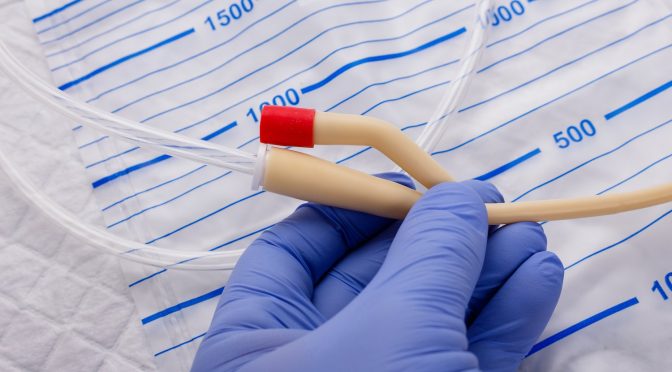What is a urethral catheter?
A catheter is a small, flexible tube inserted through the water pipe (urethra) into your bladder to drain urine into a bag. When the bag becomes full of urine, it will need to be emptied by opening the tap at the bottom. The catheterisation will be performed by either a doctor or a nurse . The catheter will feel strange at first, constantly feeling that you want to pass urine. This sensation, however, is quite normal and will soon pass.
How do I look after the catheter?
The catheter must be treated as a part of your own body and will need to be kept clean. It can be washed each day with warm, soapy water at the same time as you wash yourself. Whilst you are using the catheter, you will need to drink plenty of fluids in order to prevent urinary infections and constipation. You should also take care not to kink the catheter or to raise the drainage bag above the level of your bladder
How often do I need to change the catheter?
If it is made of Latex change every one week, if it is Silicon coated change every 1 month, but if it is made of Silicone then change every 3 months.
What are the problems expected?
Bladder spasms:
Abdominal cramp caused by the bladder trying to squeeze out the balloon. Your doctor can prescribe a drug called Tolterodine, which stops the cramps.
Leakage around the catheter:
This is called bypassing caused by bladder spasms or can take place when you open your bowels. If it happens, please check that your urine is still draining.
Blood or debris in the urine:
It is only of concern if you see large clots or solid pieces of debris passing down the catheter. If this happens, please contact your hospital.
Blockage:
This will become an emergency if not dealt with in a timely fashion. Check that the drainage bag is below the level of your bladder, that the catheter has no kinks or twists in it, that there are no clots or debris in the catheter and that you are drinking enough. If the catheter will not unblock, contact your hospital.
Catheter falling out:
If your catheter falls out, contact your hospital immediately
Urine infection:
Infection is invariably found in the urine after catheterization so a positive urine culture for bacteria is very common once a catheter has been in for more than 10-14 days; it does not necessarily mean that you need to take antibiotics. However, if you have cloudy urine, cystitis (a burning sensation), unpleasant smelling urine or a high temperature, contact your doctor immediately to determine whether you should have antibiotic treatment.





0 Comment